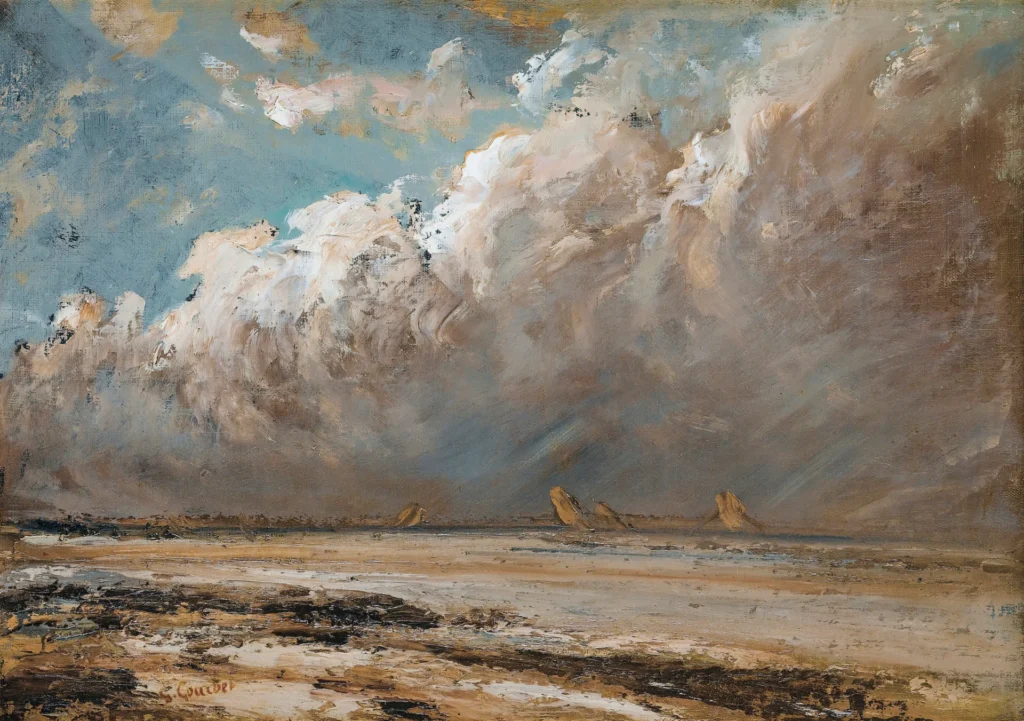Beach in Normandy (1872-1875)
Beach in Normandy showcases Gustave Courbet's mastery in the Realist genre, capturing a serene coastal landscape with meticulous attention to detail. Executed in oil on canvas, this artwork measures 61.3 x 90.2 cm and features a tranquil beach scene that transports the viewer to the shores of Normandy. The painting not only highlights Courbet's technical skill but also reflects the growing appreciation for naturalism in the 19th century, marking a pivotal moment in the evolution of modern art.
1872 - 1875
About the Artwork
Created between 1872 and 1875, Beach in Normandy represents Courbet's fascination with nature and his desire to reflect reality through his art. This painting is emblematic of the Realist movement, which sought to depict everyday life without romanticism or idealization. Courbet chose to focus on a tranquil beach, inviting the viewer to experience a moment of peace amidst the beauty of the natural world. The painting's composition highlights the contrast between the sky, land, and water, showcasing Courbet's keen eye for color and texture. The work is a testament to his belief in art serving as a form of social commentary, as it invites viewers to reconnect with the environment and contemplate the simplicity of life by the sea.
Did You Know
Gustave Courbet is often regarded as the father of the Realist movement, emphasizing ordinary subjects and scenes, which had a profound impact on subsequent generations of artists, including the Impressionists.
Beach in Normandy exemplifies Courbet’s ability to capture the essence of nature, reflecting his deep appreciation for the natural world and its unfiltered beauty, which was a stark contrast to the romanticized landscapes favored by his contemporaries.
Courbet’s pioneering techniques and focus on realism influenced many movements in the 20th century, laid the groundwork for modern art, and inspired artists to explore more innovative approaches to realism and subjectivity.










